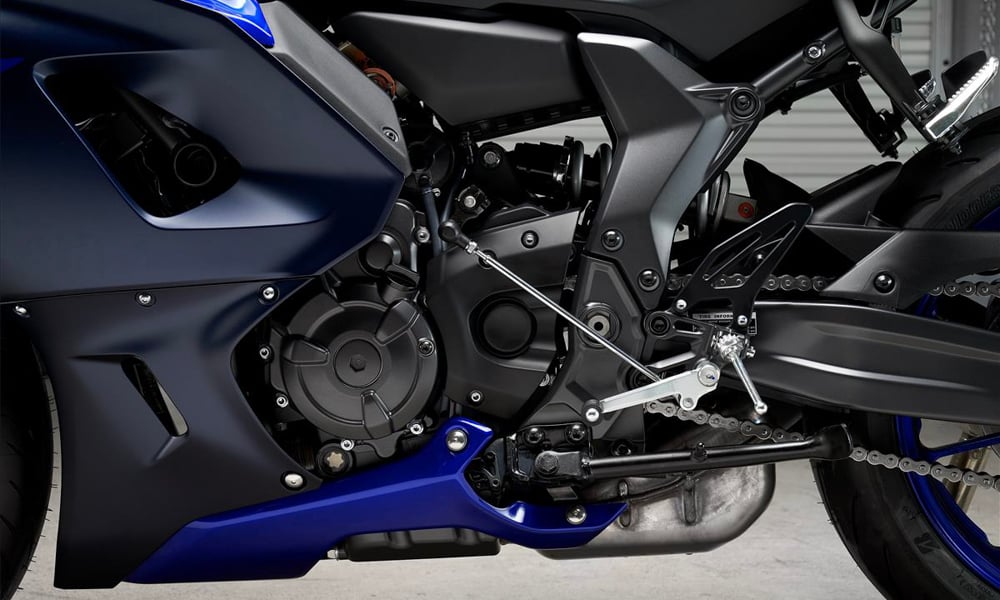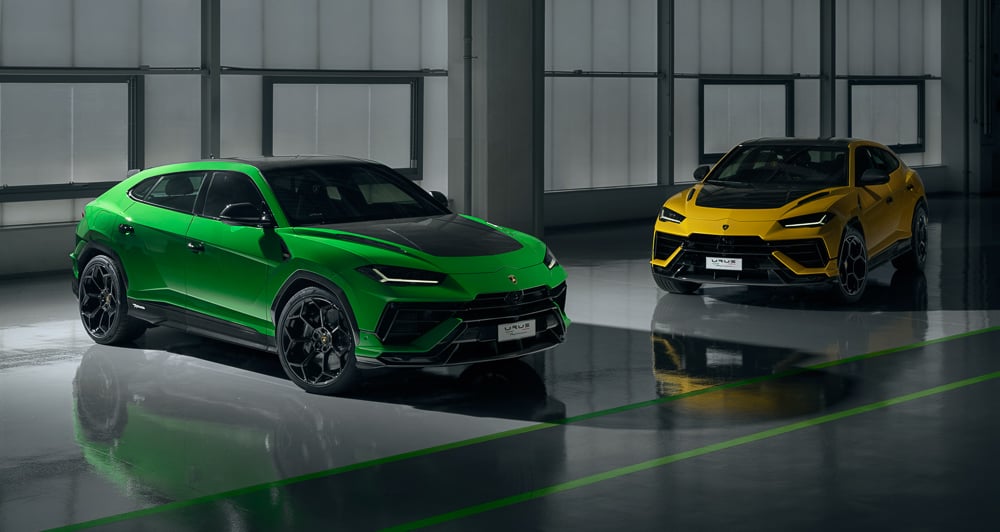
With the discontinuation of the aging R6 supersport due to ever-tightening emissions regulations, a gap was immediately apparent at Yamaha between the entry-level R3 and the top-end YZF-R1. Into this void comes the recently announced YZF-R7. The new bike is more than just a fairing slapped on the popular MT-07 (from which it is based on), as the R7 sports promising new suspension and some other goodies to satisfy knee-dragging enthusiasts. It also borrows the name of the racing-homologation bike that Yamaha made in 1999, of which only 500 units were ever produced.


The engine is Yamaha’s proven 689cc liquid-cooled parallel twin with a 270° crankshaft rated at 72.3hp at 8,750rpm, and 67Nm at 6,500rpm. That’s quite a change from the R6’s screaming 116 horses and 14,500rpm redline. Still, the Euro 5-compliant R7 has a torquey reputation in the MT-07. In the real world, it may still put a smile on a canyon carver’s face.
This motor combines increased reliability and reduced weight thanks to forged-aluminum pistons with direct-plated cylinders integrated with the crankcase. An all-new slipper clutch system is matched to the six-speed gearbox, and there’s an optional Quick Shift System for upshifts.


The narrow, high-strength steel frame mounts aluminum center braces near the swingarm pivot for torsional rigidity. The R7’s geometry is more aggressive with a sharper 23.7° rake compared to 24° for the MT-07, and the wheelbase is shorter by 5mm at 1,395mm. Weight distribution is a claimed 51:49, front to rear, with a 188kg wet weight. Standard tires are Bridgestone Battlax Hypersport rubber sized 120/70 ZR17 front and 180/55 ZR17 rear.

The suspension bits look up to the task with a fully adjustable, inverted KYB fork and a horizontally mounted link-type shock that’s configurable for preload and rebound damping. There are 129.5mm of travel on both ends. A Brembo master cylinder handles big 298mm discs in front and a 245mm disc at the back with four-piston Blue Sport calipers. The riding position is classic supersport with clip-on bars mounted below the top yoke as well as a low seat, with rearsets that are high and further back.
A new full-LCD instrument panel displays the current gear, the speed, the engine rpm, the fuel capacity, the real-time and average fuel economy, the water temperature, and the clock. Aside from antilock brakes, there’s no indication of any advanced rider modes.

Of course, the biggest draw is the styling, which is heavily inspired by the fighter-jet theme of the YZF-R1M. The sleek, aerodynamically optimized fairing is distinguished by a centrally mounted cold-air intake, low-profile fuel tank, and exquisitely shaped seat unit with a diffuser-style tail. The stubby exhaust complements the cohesive look, although buyers will likely swap it out for an aftermarket unit. The adaptive, bifunctional LED headlamp completes the visual impact.

Two colors are initially available for US and European markets: Icon Blue and gloss Yamaha Black. Prices start at $8,999 (P430,000). We have no word yet if the R7 will make it to the Philippines, but Yamaha has quite a local following, and we believe the new bike should also be made available here.











Comments